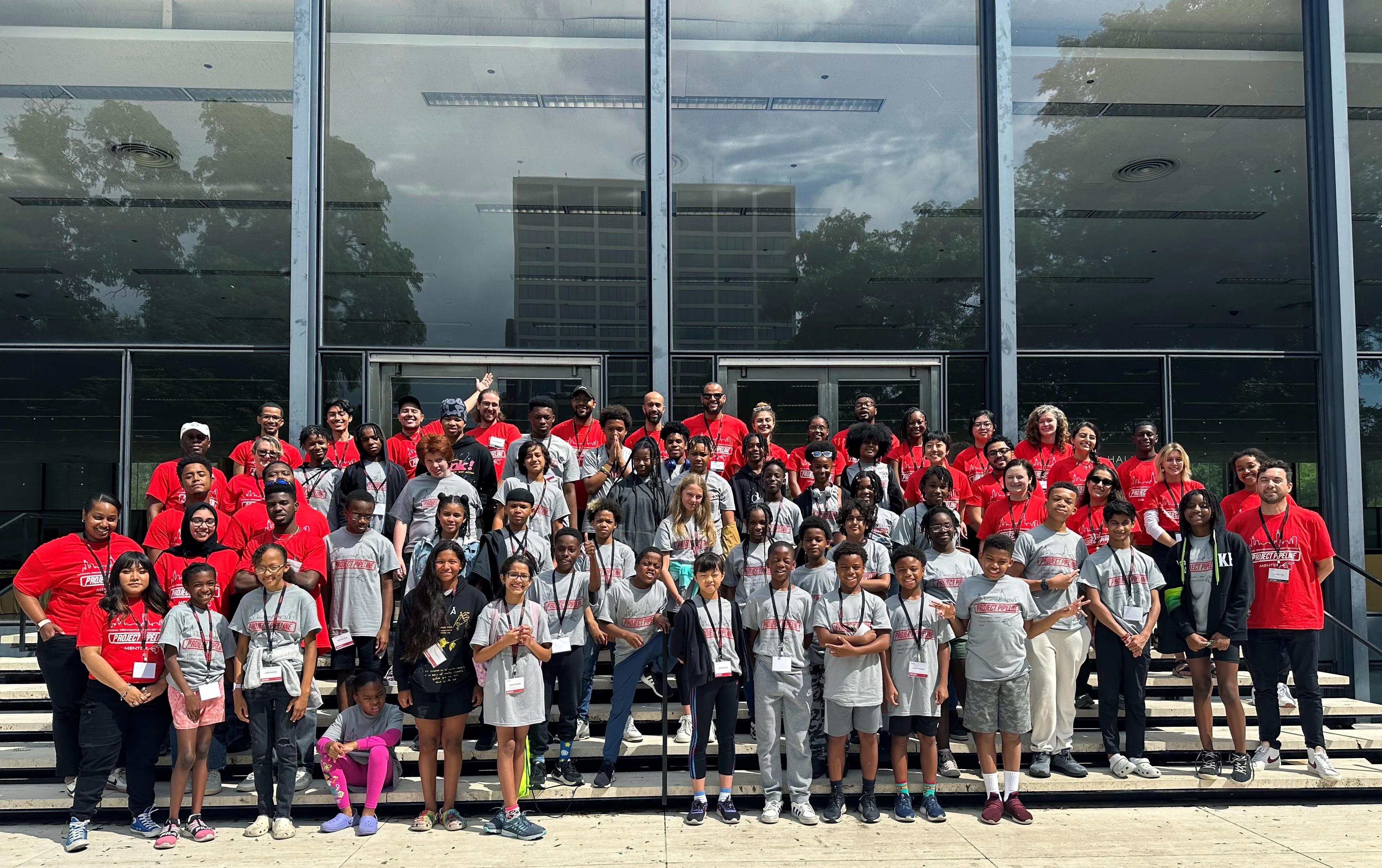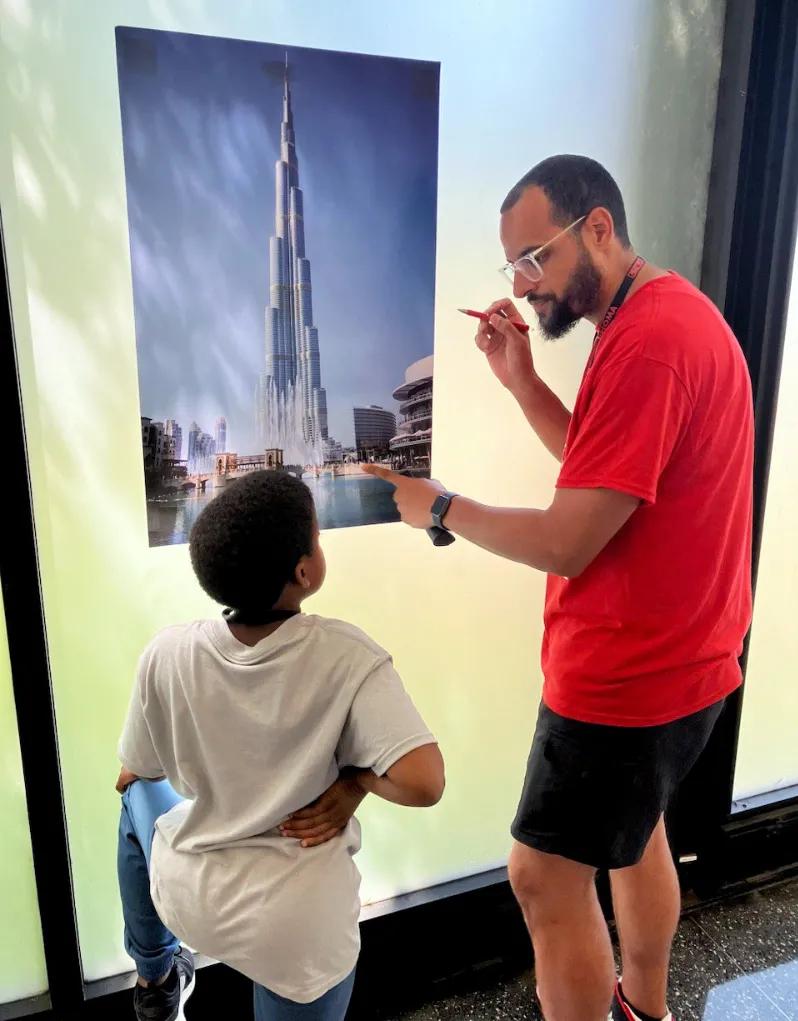During the course of my Zoom call with recently licensed architect Richie Hands, two things became clear right away: 1. he’s a devoted dad, and 2. he’s committed to clearing a path for the next generation of architects.
Based in Chicago with his wife, Kelli, and nearly two-year-old son, Quinten, Richie balances his working time between co-leading an architecture studio at Lamar Johnson Collaborative, leading as an associate director on the American Institute of Architects (AIA) Chicago Board of Directors, and serving as the national chair of the National Organization of Minority Architects (NOMA) Project Pipeline program.
Identity and Architecture
Founded in 2012, NOMA’s Project Pipeline facilitates summer camps across the United States that introduce young people of color to the field of architecture. By equipping attendees with information, tools, and mentor relationships, Project Pipeline is also supporting its mission to increase the number of Black licensed architects—who currently comprise only 3% of all architects in the United States. As a Black man, Richie has felt the weight of this statistic, manifesting in his life as a drive to mentor Black and POC students and also as a sense of added pressure to become licensed.
“I always felt like it was expected of me to be licensed because there isn't a ton of Black architects—the added pressure also affected my ability to successfully test,” Richie said. He also spoke to the pressure that minority groups can feel in architecture to simultaneously be successful at their firm, give back to their communities, and work for a more inclusive culture within architecture. “The profession can only change when more people get licensed that are coming from different backgrounds. But at the same time, there aren’t as many people from those backgrounds active in the profession,” he explained.

Journey to Licensure
Richie's interest in an architecture career was sparked by a drafting class he took while still in high school. Following graduation, he pursued a Bachelor of Science in Architectural Studies at the University of Wisconsin in Milwaukee. Since his program was not accredited by the National Architectural Accrediting Board (NAAB), he also pursued and earned his Master of Architecture from the Illinois Institute of Technology after gaining experience working as a project assistant.
After meeting his educational requirements and while making progress toward the Architectural Experience Program® (AXP®), Richie encountered difficulties preparing for the national licensing exam. “When I did start testing, I was at Gensler at the time,” he said. “And I remember looking for resources and finding all of them, outside of the resources Gensler had, to be either really expensive or were good but weren't necessarily the thing that helped me study most efficiently.” What helped him finally pass his last exam and get licensed this year, he said, was not just his firm’s support or new study resources like NCARB’s free practice exams, but—most importantly—his son’s sleep schedule.
“It was hard to find a consistent time to study. The only reason I was able to get licensed this past year is that my son, who is now almost two, basically had a consistent schedule every single day, give or take if he was sick.” Richie further explained, “So I was able to study in the mornings before he woke up and at nights after he went to bed, so this was how I did my best to prioritize getting licensed.”
Richie was also quick to acknowledge how he and his wife benefitted from having a nanny share—without which, his consistent study schedule might not have been as feasible. Similarly, he noted how he's been grateful to work at a firm like the Lamar Johnson Collaborative that encourages and supports licensure candidates in tangible ways, such as by covering the cost of passed exams and compensating staff for time spent taking exam divisions.
Other than trying to prioritize a consistent study schedule, “even if it’s only an hour or two a day,” Richie’s advice to those still taking the Architect Registration Examination® (ARE®) was to take time each week to rest and prioritize things that make them happy. For example, watching the latest Star Wars show whenever it came out (his example).

Guiding the Next Generation
Now officially a licensed architect, Richie is continuing to channel his energy into advocacy for his peers and students in architecture. “Part of my hopes and goals for being a studio leader was being able to advocate for people within the studios,” he said. “For example, being able to say [to an advisor], ‘Hey, so-and-so is excellent at their job. I think it'd be great if they had the opportunity to do some of these other things to continue to build on their skillset.”
This same attitude extends to his volunteering with the ACE Mentor Program of America (ACE) and work with NOMA’s Project Pipeline, where he says his greatest fulfilment comes from seeing growth and a greater understanding of architecture and design in the students year after year.
When I asked him what he’s looking forward to for the future, he replied, “When it comes to things that excite me these days, it’s honestly watching my son grow up, learn, and explore. And other than that, it’s being able to advocate for young people in the field of architecture.”
